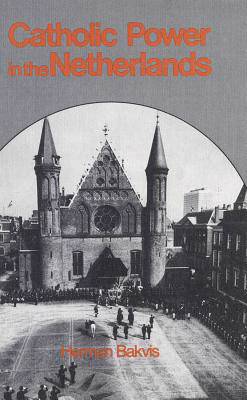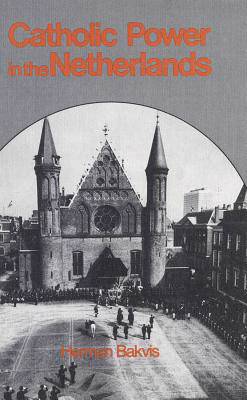
Door een staking bij bpost kan je online bestelling op dit moment iets langer onderweg zijn dan voorzien. Dringend iets nodig? Onze winkels ontvangen jou met open armen!
- Afhalen na 1 uur in een winkel met voorraad
- Gratis thuislevering in België vanaf € 30
- Ruim aanbod met 7 miljoen producten
Door een staking bij bpost kan je online bestelling op dit moment iets langer onderweg zijn dan voorzien. Dringend iets nodig? Onze winkels ontvangen jou met open armen!
- Afhalen na 1 uur in een winkel met voorraad
- Gratis thuislevering in België vanaf € 30
- Ruim aanbod met 7 miljoen producten
Zoeken
Omschrijving
This book examines the role of the Dutch Catholic church, and especially of the bishops, in ensuring the solidarity of the Catholic subculture for so many years and, more remarkably, in promoting drastic social and political changes after Vatican II. This development transformed one of the most orthodox churches in Western Europe into the most radical and, as Professor Bakvis demonstrates, led to the decline and fall of the largest political party in the Netherlands. The author also discusses the recent formulation of the Christian Democratic party and the impact of John Paul II's pontificate. He has drawn upon interviews with priests and politicians, as well as survey and ecological data, in his portrayal of life inside the Catholic subculture at both the grass-roots and the elite levels. The result is a substantial contribution to our understanding of the interaction of religion and politics in a plural society and the sources of party loyalty and subcultural cohesion.
Specificaties
Betrokkenen
- Auteur(s):
- Uitgeverij:
Inhoud
- Aantal bladzijden:
- 240
- Taal:
- Engels
Eigenschappen
- Productcode (EAN):
- 9780773503618
- Verschijningsdatum:
- 1/12/1981
- Uitvoering:
- Hardcover
- Formaat:
- Genaaid
- Afmetingen:
- 152 mm x 229 mm
- Gewicht:
- 566 g

Alleen bij Standaard Boekhandel
+ 354 punten op je klantenkaart van Standaard Boekhandel
Beoordelingen
We publiceren alleen reviews die voldoen aan de voorwaarden voor reviews. Bekijk onze voorwaarden voor reviews.











